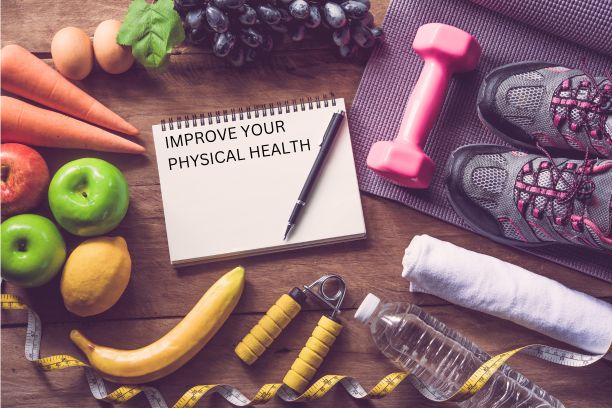When it comes to improving your health and overall wellness, there’s one practice that keeps popping up: mindfulness. In this blog post, we’ll explore what mindfulness is and how it can be beneficial for your mental and physical health. You’ll learn about the positive effects of being mindful and why it’s a helpful tool in managing stress, improving focus, and much more.
What is Mindfulness?
Mindfulness is the practice of present moment awareness. It is about living in the here and now and letting go of worries about the past or future. When you are mindful, you are fully engaged in what you are doing. You are not thinking about other things or letting your mind wander. Mindfulness can be practiced anywhere and at any time. It is a simple but powerful tool that can help reduce stress, improve mental and physical health, and increase happiness. There are many benefits of mindfulness for mental and physical health. Mindfulness can help reduce stress, anxiety, and depression. It can also help improve sleep quality, focus, and memory. Additionally, mindfulness can lower blood pressure, heart rate, and chronic pain symptoms. And finally, mindfulness has been shown to boost immune system function.
Benefits of Mindfulness for Mental Health and Physical Health
There are many benefits of mindfulness for mental and physical health. Some of the most common benefits include reducing stress, anxiety, and depression; improving sleep; and reducing pain. Mindfulness can also help to improve overall well-being and quality of life. It can help you to be more present in the moment, to focus on what is happening around you, and to become more aware of your thoughts and feelings. Regular practice of mindfulness can lead to lasting changes in mood and outlook. It can also help to increase self-awareness, self-compassion, and self-esteem.
Steps to Practicing Mindfulness
1. Set aside some time each day to practice mindfulness. It can be helpful to set a regular time each day to practice, such as first thing in the morning or last thing at night.
2. Find a comfortable place to sit or lie down. You may want to close your eyes and focus on your breath.
3. Pay attention to your breath and the sensations in your body. Notice how your body feels as you breathe in and out.
4. Allow your thoughts to come and go without judgment. If you find yourself getting caught up in thinking, simply return your attention to your breath or the sensation in your body.
5. Don’t worry if you can’t seem to quiet your mind at first. Mindfulness is a practice that takes time and patience. With regular practice, you will likely find it easier to focus on the present moment.
Tips to Increase Mindful Awareness in your Life
1. Start your day with intention. When you wake up in the morning, take a few moments to set an intention for the day. This could be something as simple as “I will be present in every moment today” or “I will practice mindfulness in all my interactions.”
2. Make time for mindfulness practices. Set aside some time each day to focus on your breath and being present in the moment. You can start with just a few minutes and gradually increase the amount of time you spend practicing mindfulness.
3. Be mindful of your surroundings. Pay attention to your environment and really see, smell, taste, touch, and feel everything around you.
4. Be aware of your thoughts and emotions. Notice when you start to have thoughts that are judgmental or critical and simply observe them without getting caught up in them. same goes for emotions – acknowledge them without getting attached to them.
5 . Respond, don’t react . When you find yourself in a challenging situation, take a deep breath and respond mindfully rather than reacting emotionally or impulsively.
Resources to Support Your Mindfulness Practice
Mindfulness is a practice that can be done anywhere and at any time. All you need is your breath and your body. However, there are many resources available to support your mindfulness practice, including books, websites, apps, and classes. Books on mindfulness include “Wherever You Go, There You Are” by Jon Kabat-Zinn, “The Mindful Way through Depression” by Mark Williams, John Teasdale, Zindel Segal, and Jon Kabat-Zinn, and “Full Catastrophe Living” by Jon Kabat-Zinn. Websites like mindful.org and soundstrue.com offer courses and articles on mindfulness. Apps like Headspace and Calm offer guided meditation practices. And there are many classes available in communities across the country. When you’re first starting out with mindfulness, it can be helpful to have some guidance from a teacher or experienced practitioner. But ultimately, the practice is something you can do on your own, anytime and anywhere.
Conclusion
In conclusion, mindfulness has been proven to be an effective tool for both physical and mental health. Regularly practicing mindfulness can help us develop healthier relationships with our own bodies and minds while leading a happier and more balanced life. With plenty of resources available online, there are tools that everyone can use in order to achieve greater wellbeing through the practice of mindful living. So why not give it a go today?

